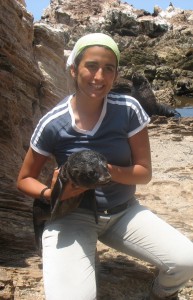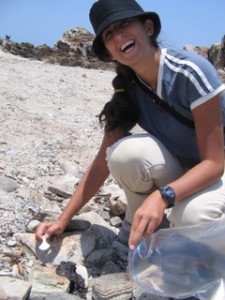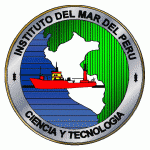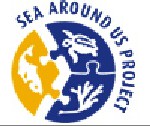
South American fur seal pup and me
Alumni
MSc 2012
Tel: 604.822.8181
Fax: 604.822.8180
E-mail: s.cardenas@oceans.ubc.ca
Supervisor: Dr. Andrew Trites
Education: BSc – Biology (Universidad Peruana Cayetano Heredia, 2005), Lic.-Biology (Universidad Peruana Cayetano Heredia, 2007)
Research Interests: Population dynamics, Ecology, marine conservation
Research Area: Peru
Recovery of South American fur seals in Peru
Problem
South American fur seals in Peru are linked to the flow of cold and productive waters of the Humboldt Current which sustains a large biomass of pelagic fish, marine mammals and seabirds. Their presence on the coast of Peru has been recorded since pre-Inca times, and seemed to be quite numerous in the past centuries. Records indicate that harvesting of South American fur seals was intense in the 20th century, causing a strong impact to population numbers. Poaching of fur seals was officially banned by law in 1959, allowing colonies to recover. However, it is also widely known that the coast of Peru is affected by recurring El Niño events, where warmer sea surface temperatures reduce ocean productivity and generate change in prey availability. These events, depending on their intensity can cause large mortality or reduced growth in fur seal populations. For example, the effects of the 1997/98 El Niño diminished SA fur seal abundance in Peru by 72% and left less than 5,000 surviving individuals. Population recovery along the coast of Peru has been occurring since 2000, but little is understood about the process and why some sites have recovered faster than others.
Research Questions
To address this problem I have proposed answering the following questions: 1) What are the biological features of South American fur seals that allow them to recover in Peru? 2) What are the environmental factors that support the recovery of South American fur seals in Peru?
Approach
To answer these questions, I am evaluating changes in South American fur seal population in Peru at two different spatial and temporal scales, each as a separate thesis chapter.
For chapter one, I am working with more than 25 years of detailed information from an important fur seal breeding site in southern Peru called Punta San Juan. For this chapter I will be evaluating important life history parameters that can contribute to fast recovery after catastrophic events, such as changes in fur seal abundance and pup production. Finally, these results will be correlated with sea surface temperature and a anchovy biomass (90% of this species diet) for more than 25 years.
For my second chapter, I am reconstructing the population of South American fur seals in Peru from 1925 until 2010. Population trajectories are built by a population growth model and stochastic stock reconstruction analysis (SSRA) which uses fur seal catch numbers as the main driver for the model.
Findings from these two scales will help reveal what factors most affect South American fur seal population numbers in Peru.
Preliminary Findings
Population recovery of South American fur seals seems to be faster than commonly reported for pinnipeds (r>0.12).
Strong site fidelity to allows them to reoccupy previously abandoned sites.
Peru seems to have had a very high carrying capacity for South american fur seals than previously thought. Population models that include estimates from the exploitation era may help explain this better.
Finally, results from this study aim to help to understand the time it takes for a population of fur seals to recover and the conditions required to promote recovery, which aids in assessing the risk of extinction of the other 10 species of fur seals.
Theses
- Cárdenas, S. (2007) Preferencia de uso de sitios para pariciones por hembras de Arctocephalus australis (ZIMMERMANN, 1783) en la Reserva Guanera Punta San Juan, Perú. Tesis para optar por el título de Biólogo. Universidad Peruana Cayetano Heredia, Lima Peru.
Presentations
- Cárdenas, S. Life history of South American fur seals in Peru: Putting together the pieces of the puzzle. Northwest Student Chapter of the Society for Marine Mammalogy 2010. (Talk)
- Cárdenas, S. Up and Down: Pinniped Stories from Peru. BC Marine Mammal Symposium 2009. (Talk)
- Cárdenas, S.; Trites, A.W.; Majluf, P. Recovery of South American fur seals in Peru. 18thBiennial Conference on Biology of Marine Mammals 2009. (Poster)
- Cárdenas, S. The recovery of South American fur seals in Peru after catastrophic declines. BC Marine Mammal Symposium 2008.(Talk)
| I appreciate the help and support provided by: | |||




